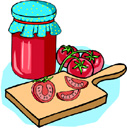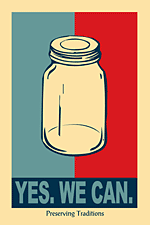 The National Grange of the Order of Patrons of Husbandry (“the Grange”) recognizes seven degrees of membership. The first four degrees are conferred at the local level by one’s home Grange. The fifth degree is administered by the regional, or Pomona, Grange; the sixth, by the State Grange; and the seventh, by the National Grange.
The National Grange of the Order of Patrons of Husbandry (“the Grange”) recognizes seven degrees of membership. The first four degrees are conferred at the local level by one’s home Grange. The fifth degree is administered by the regional, or Pomona, Grange; the sixth, by the State Grange; and the seventh, by the National Grange.
At induction to each level, the Grange imparts various teachings and exhortations about the Grange and the Granger’s duties, as well as explanations of the Grange’s symbolic objects, hand signs, and yes, even the secret handshake. But I can’t tell you about them, or I’d lose the respect of my fellow Grangers and be expelled from the Grange. So you’ll forgive me if I speak only in broad terms!
I was initiated into the fifth and sixth degrees at the state Grange meeting in mid-October. What were the ceremonies like? In a word, awesome. And I mean that in both the “wow, cool!” sense and in the sense of being humbling and awe-inspiring.
Now, I’m fairly susceptible to good ritual. I like the sense of tradition, of rites handed down generation after generation. I appreciate good symbolism, especially tangible, physical, kinesthetic symbolism: walking on a ritual journey, bestowing meaningful objects, and that coveted secret hand gesture. And I confess to enjoying a bit of theatre – costumes and pageantry, set dressing and lighting effects, shared songs and speeches a bit on the highfalutin’ side of the everyday. It all works together to impress upon one that this is not ordinary time; something special is going on here, and whether or not we believe all the bits, we’re happy to play along for the joy it brings, and the messages it conveys.
If you grew up celebrating the typical American Santa-centered Christmas, you know all about these aspects of ritual: the fur-trimmed red suit, the twinkling lights, snow and reindeer (real or cartoony), singing “Up on the Housetop,” and the ever-important ritual question, “Have you been good this year?” Only the youngest believe Santa is a real person with the power to grant wishes, but for those few moments, we indulgently play along. We enjoy the pageantry, remember our own memories of whispered wishes on Santa’s knee, and renew our pledges to try to be very very good this year in the hopes of good returns.
With no young kids in my life these days, I no longer really celebrate “Santamas,” and with it goes one of the last time-honored group traditions from my household. And you know what? I miss it. I miss feeling like part of something bigger than myself. I miss the comfort of knowing all the words (even if I don’t totally believe them) and the tune and the “right” clothes to wear. I march to my own drummer most of the time…but I also miss the Little Drummer Boy.
So the degree conferral satisfied my hankering for spectacular ceremony. But beyond this aesthetic appreciation for the ceremonies, I found – somewhat to my surprise – that these rites really mattered to me. I feel different now, about the Grange, about my place within the Grange, and even a bit different about how I see myself. I admit that before the degree work, I was concerned about the way some of my opinions differ from the prevailing opinions of the National Grange. But after the ceremonies, and after meeting Grangers from across the state, I know for certain that the Grange is a great place for me. Yes, I differ on some points of politics and religion, but I find that I really do agree with the more fundamental issues of growing and preparing of food. And I see myself as really belonging to this tradition of growers and makers, of sowers and sewers: of Patrons of Husbandry. It feels really, really good to belong to a group of people who deeply appreciate what I do, in the garden and the kitchen and the Grange hall. And I really like the Grangers I met. They’re just good folks.
Would you find as good a fit within the Grange? If you enjoy bringing food forth from the soil, be it in a garden, on a farm, in an orchard, or on that mythical “back forty” you hope to have someday, you very well may. If you take pride in the work of your hands, such as needlework, spinning, weaving, or even nature photography, you just might. If you enjoy shopping at the farmers’ market and turning that bounty into nourishing meals, and appreciate the work that went into coaxing that food from the soil, I bet you would.
Maybe I’ll see you next year, and hand you an apple. And you’ll understand, and smile just as hugely as I did.





 [
[



